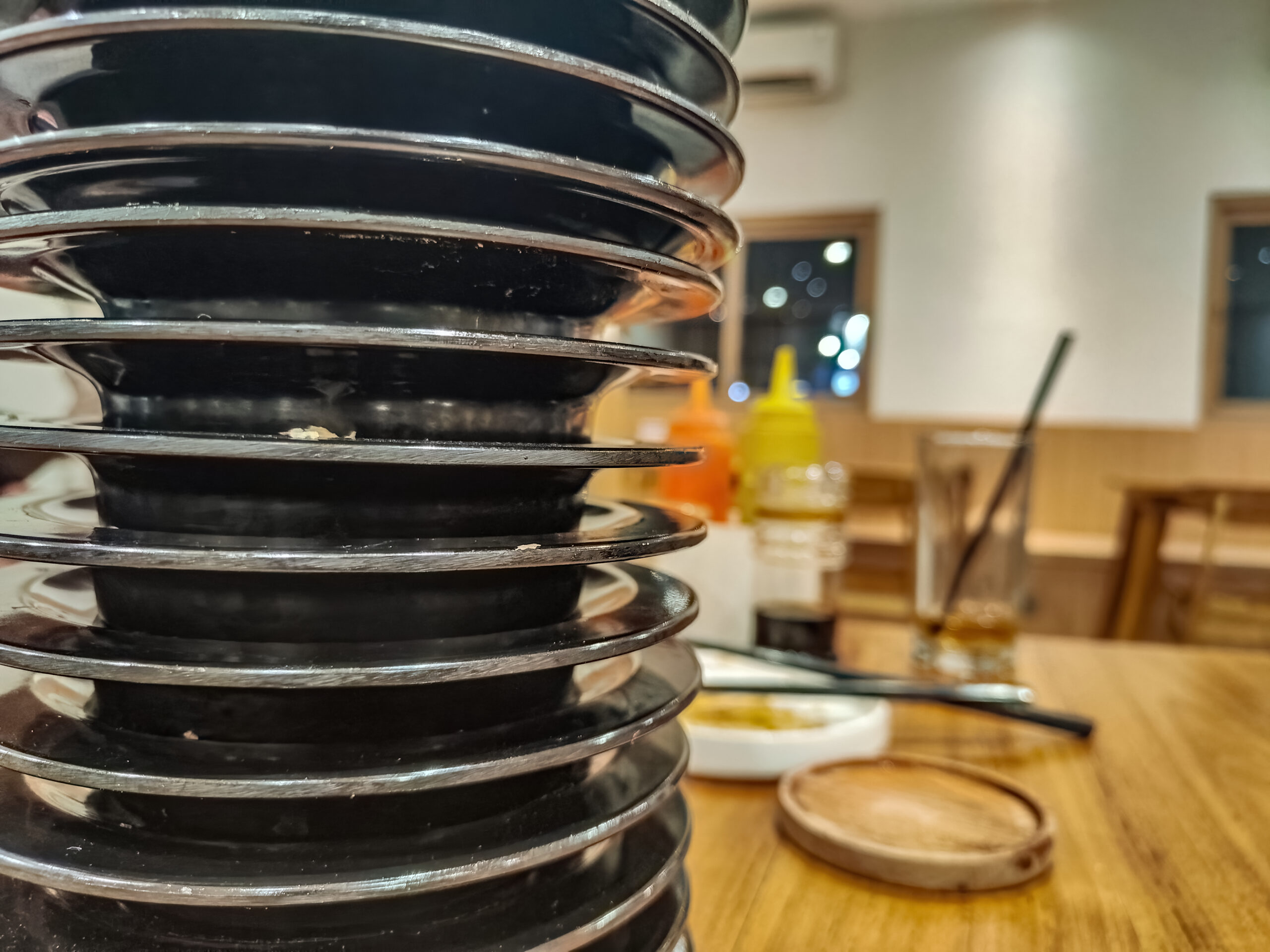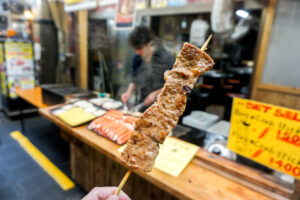Japanese izakaya dining presents a vibrant tapestry of flavors, aromas, and social interactions that have captivated both locals and travelers alike. These informal pubs offer a delightful departure from traditional Japanese dining, combining a relaxed atmosphere with diverse culinary offerings. As the world continues to embrace Japanese culture, izakayas stand out as a unique dining experience steeped in history and community. Let’s explore the rich world of izakaya dining, from its historical roots to its future in a global landscape.
The Rich History Behind Japan’s Izakaya Dining Culture
The origins of izakayas can be traced back to the Edo period (1603-1868) in Japan, where they began as establishments for sake consumption. Initially referred to as "sakaba," these early izakayas served as informal gathering spots for merchants, laborers, and townsfolk, providing both drinks and simple foods to accompany them. As the culture of drinking evolved, izakayas adapted, transitioning from mere sake-serving venues to vibrant social hubs offering a wide array of dishes.
During the Meiji Restoration in the late 19th century, Japan underwent dramatic changes, including the modernization of its culinary landscape. With an influx of Western influences, izakayas began to incorporate new ingredients and cooking styles. It was during this time that the concept of “izakaya” as we know it today began to take shape, with a focus on small, shareable plates and a laid-back ambience.
In post-war Japan, izakayas flourished as a response to social changes and economic growth. As the country rebuilt, these establishments became essential for socialization, allowing people to unwind after long workdays. The izakaya culture gained popularity, leading to the establishment of numerous chains and independent venues throughout the country.
Today, izakayas are celebrated not just for their food and drink but also for their role in fostering community and camaraderie. They symbolize a blending of tradition and modernity, where age-old practices coexist with contemporary culinary trends. This rich history contributes to the unique experience offered by izakayas, making them a quintessential aspect of Japanese dining culture.
What Sets Izakayas Apart from Traditional Japanese Restaurants
Izakayas differ significantly from traditional Japanese restaurants, primarily in terms of atmosphere and menu offerings. While conventional restaurants often focus on formal dining experiences, izakayas exude a casual, inviting vibe. Diners can expect to enjoy their meals in a lively environment, often characterized by communal seating and a warm, bustling ambiance.
Another key distinction lies in the menu structure. Traditional Japanese restaurants typically feature a set course or a limited à la carte menu that emphasizes seasonal ingredients and culinary precision. In contrast, izakayas embrace a more varied and eclectic approach. Diners can choose from a wide array of small plates, allowing for a more interactive and customizable dining experience.
The pricing model in izakayas is also different. The affordability of izakaya dishes encourages sharing and sampling, promoting a communal dining experience that contrasts with the often more formal and expensive offerings found in traditional restaurants. This makes izakayas popular among groups of friends looking for a relaxed evening out.
Moreover, the focus on alcohol in izakayas cannot be overstated. While traditional restaurants may offer a curated selection of drinks, izakayas are known for their extensive beverage menus, particularly sake, shochu, and beer. The emphasis on pairing food with drinks adds another layer of enjoyment to the izakaya experience.
Finally, izakayas often feature an open kitchen, allowing diners to witness the preparation of their food. This transparency creates a connection between the chefs and patrons, enhancing the overall dining experience. The combination of atmosphere, menu variety, and communal spirit truly sets izakayas apart from their more traditional counterparts.
A Culinary Journey: Signature Dishes of Izakaya Menus
Izakaya menus are a delightful mélange of flavors, with dishes that range from traditional favorites to innovative creations. Some signature items are ubiquitous across izakayas, such as yakitori, which are skewered and grilled chicken pieces seasoned with salt or tare sauce. This dish is often accompanied by various dipping sauces, making it a must-try for izakaya-goers.
Another popular dish is edamame, lightly salted young soybeans that serve as a perfect snack to nibble on while enjoying drinks. This simple yet flavorful appetizer is a staple in izakayas and is enjoyed by both locals and visitors alike. Alongside edamame, gyoza (Japanese dumplings) and tempura (battered and deep-fried vegetables or seafood) are frequently found on izakaya menus, showcasing the diversity of Japanese cuisine.
In addition to these classics, izakayas often feature seasonal dishes that highlight local ingredients. For example, during summer months, diners may find grilled fish or sashimi that emphasize the freshness of the season. Similarly, winter menus might spotlight hearty dishes like nabe (hot pot) that encourage warmth and sharing among friends.
Another beloved izakaya dish is karaage, which consists of marinated and fried chicken pieces that are crispy on the outside and juicy on the inside. This dish is often served with a wedge of lemon and a side of dipping sauce, making it a favorite among patrons. The versatility of karaage allows for variations, including seafood and vegetable versions.
Additionally, izakayas often feature creative fusion dishes that blend Japanese ingredients with international flavors. For instance, you might find spicy tuna tartare served with sushi rice chips or nachos topped with teriyaki chicken. These innovative offerings showcase the evolving nature of izakaya cuisine and appeal to a broad audience.
Ultimately, the diversity of dishes available at izakayas creates an exciting culinary journey for diners. With a focus on sharing and sampling, izakayas provide an opportunity to explore various flavors and textures, making each visit a unique and satisfying experience.
The Art of Sake: Pairing Drinks with Izakaya Fare
Sake, Japan’s traditional rice wine, plays an integral role in the izakaya experience. With a rich history and a diverse range of flavors, sake is the perfect accompaniment to the wide variety of dishes typically found on izakaya menus. Understanding the nuances of sake and how to pair it with food can elevate the dining experience significantly.
There are several types of sake, categorized based on the degree of rice polishing, fermentation process, and the addition of distilled alcohol. For example, junmai sake is pure rice sake, while ginjo sake features rice polished to a higher degree, resulting in a more fragrant and delicate flavor. Choosing the right type of sake to complement specific dishes enhances the overall dining experience.
When it comes to pairing sake with izakaya fare, lighter styles, such as ginjo or daiginjo, typically work well with delicate dishes like sashimi and grilled fish. Their subtle flavors enhance the freshness of these ingredients without overpowering them. On the other hand, richer sake varieties, such as junmai or nigori, can hold their own against heartier items like fried chicken or spicy dishes.
In addition to sake, izakayas often serve shochu, a distilled spirit made from various ingredients, including barley, sweet potatoes, and rice. Shochu provides a different flavor profile and is sometimes served in cocktails, making it a versatile option for pairing with izakaya cuisine. For instance, a refreshing shochu cocktail can complement the crispness of tempura or the richness of nabe.
Beer also holds a prominent place in izakaya culture, with many establishments offering locally brewed options. Japanese lagers, characterized by their crisp and clean flavors, pair well with fried and grilled dishes. The carbonation of beer can cut through the richness of fried foods, enhancing the overall enjoyment of the meal.
Ultimately, the art of pairing drinks with izakaya fare is about exploring flavors and personal preferences. Whether opting for sake, shochu, or beer, the right beverage can enrich the izakaya experience and create memorable moments shared among friends and loved ones.
Ambiance and Décor: What to Expect Inside an Izakaya
Walking into an izakaya is an experience in itself, as the ambiance is designed to create a warm and inviting atmosphere. The layout typically features wooden tables and chairs, with many izakayas opting for low lighting and traditional Japanese decorations. This cozy environment encourages relaxation and social interaction, setting the stage for a memorable dining experience.
The décor of an izakaya often reflects its regional identity and concept. Some establishments showcase traditional elements such as shoji screens, tatami mats, and paper lanterns, while others take a more modern approach with sleek designs and contemporary art. This blend of styles creates a unique charm that invites diners to immerse themselves in Japanese culture.
In addition to the décor, the sounds of an izakaya contribute to the overall ambiance. The clinking of glasses, laughter of patrons, and sizzling of food on the grill create a lively atmosphere that encapsulates the essence of communal dining. Izakayas are often bustling, with chefs and servers moving swiftly to cater to the demands of their guests.
Another defining feature of izakayas is the open kitchen concept, which allows diners to observe the preparation of their food. This transparency fosters a connection between patrons and the culinary staff, creating a sense of trust and appreciation for the craftsmanship involved in their meals. It’s not uncommon to see chefs expertly grilling yakitori or frying tempura right before your eyes.
Many izakayas also incorporate elements of nature into their design, such as wooden beams, plants, and natural light. This organic touch complements the rustic charm of the establishment and enhances the overall dining experience. Some izakayas even feature outdoor seating areas, allowing guests to enjoy their meals while immersed in the sights and sounds of the surrounding environment.
Ultimately, the ambiance and décor of an izakaya play a significant role in shaping the overall dining experience. The combination of inviting design, lively sounds, and interactive cooking creates an environment that encourages connection and enjoyment, making izakayas a beloved destination for locals and tourists alike.
The Role of Izakayas in Japanese Social Life and Community
Izakayas are more than just places to eat and drink; they play a crucial role in Japanese social life and community-building. These establishments serve as informal gathering spots where friends, colleagues, and families come together to share meals and create lasting memories. The communal nature of izakaya dining fosters connection and camaraderie among patrons.
In Japan, it’s common for groups to visit izakayas after work or during special occasions. The relaxed atmosphere allows people to unwind and engage in meaningful conversations, strengthening relationships and fostering a sense of belonging. This social aspect is particularly significant in a culture that often emphasizes formality and hierarchy in professional settings.
Izakayas are also a popular choice for celebrations and milestones, such as birthdays, promotions, or simply getting together with friends. The diverse menu offerings cater to various tastes, making it easy for groups to find something for everyone. Additionally, the affordability of izakaya dining encourages frequent visits, further solidifying their role in community life.
Moreover, izakayas often host local events and activities, such as sake tastings or seasonal festivals, contributing to the vibrancy of their neighborhoods. These events not only attract patrons but also create a sense of community pride and engagement. Many izakayas collaborate with local artisans and producers, showcasing regional specialties and fostering connections between consumers and creators.
Beyond social gatherings, izakayas also serve as a space for cultural exchange. Travelers visiting Japan often seek out izakayas to experience authentic Japanese cuisine and hospitality. The informal setting allows for interactions between locals and visitors, creating opportunities for sharing stories and forming connections across cultures.
In essence, izakayas embody the spirit of community and togetherness that is central to Japanese culture. Through shared meals, lively conversations, and collaborative events, izakayas contribute to the social fabric of their neighborhoods, making them cherished establishments in the hearts of many.
Popular Izakaya Chains and Hidden Gems Across Japan
Japan boasts a range of izakaya chains and hidden gems, each offering a unique take on the classic dining experience. Popular chains, such as Torikizoku and Shirokiya, have gained recognition for their consistency and accessibility. Torikizoku, known for its affordable yakitori and laid-back atmosphere, has locations throughout Japan, making it a go-to choice for both locals and tourists.
Another well-known chain is Gindaco, famous for its takoyaki, a popular street food consisting of battered octopus balls. Gindaco izakayas often feature a lively setting, where diners can enjoy their takoyaki alongside various dipping sauces and beverages. The chain’s emphasis on quality and flavor has made it a favorite among those seeking casual dining options.
While chains offer convenience and familiarity, hidden gems abound throughout Japan, each with its own character and charm. Small, family-owned izakayas often provide a more intimate dining experience, allowing patrons to connect with the owners and chefs. These establishments frequently showcase regional specialties and traditional cooking techniques that may not be found in larger chains.
In cities like Tokyo and Kyoto, a plethora of izakayas can be discovered tucked away in narrow alleyways and side streets. In these hidden spots, diners can encounter unique dishes and local flavors that reflect the character of the surrounding neighborhood. For example, izakayas in Osaka may feature specialty okonomiyaki, while those in Fukuoka may serve up tantalizing mentaiko (spicy cod roe) dishes.
For those seeking an authentic izakaya experience, exploring local recommendations and reviews is a great way to uncover these hidden treasures. Many izakayas have a loyal following, with regular patrons returning for their favorite dishes and warm hospitality. Engaging with locals can provide valuable insights into the best places to eat and drink.
Ultimately, whether at a popular chain or a hidden gem, the diversity of izakayas across Japan ensures that there is something for everyone. Each establishment offers a unique experience that contributes to the rich tapestry of izakaya dining culture.
Exploring Regional Variations in Izakaya Cuisine
Japan’s diverse culinary landscape is reflected in the variations of izakaya cuisine found across different regions. Each area boasts its own specialties and ingredients, shaped by local traditions and the availability of fresh produce. As such, exploring regional izakayas provides a fascinating glimpse into the country’s rich culinary heritage.
In Hokkaido, for example, izakayas often showcase the region’s abundance of seafood. Dishes like fresh sashimi, grilled scallops, and crab are commonly featured, highlighting the quality of ingredients sourced from the surrounding waters. The cold climate also lends itself to hearty comfort foods, such as nabe hot pots and rich miso-based soups.
Traveling south to Osaka, known as the "kitchen of Japan," izakayas in this region are famous for their street food-inspired offerings. Diners can indulge in local favorites like takoyaki and okonomiyaki, which are often prepared in front of guests, adding an interactive element to the dining experience. The emphasis on bold flavors and shareable plates makes Osaka izakayas particularly lively.
In Kyoto, izakayas may incorporate traditional kaiseki elements, offering a more refined dining experience. Seasonal ingredients are carefully selected to create beautifully presented dishes that highlight the natural flavors of the region. Izakayas in Kyoto often emphasize local specialties such as yudofu (tofu hot pot) and tsukemono (pickled vegetables), providing a unique twist on the classic izakaya experience.
Further south, in Fukuoka, izakayas are known for their mentaiko dishes and tonkotsu ramen. Mentaiko, or spicy cod roe, is a popular ingredient that often features in various forms, from simple rice dishes to elaborate appetizers. The izakayas here typically offer a casual, laid-back atmosphere, encouraging patrons to enjoy their meals at a leisurely pace.
In Okinawa, izakayas reflect the island’s distinct cultural influences, showcasing unique dishes like goya champuru (stir-fried bitter melon) and Okinawan sake. The flavors are often influenced by the region’s tropical climate and diverse culinary heritage, creating a vibrant dining experience that stands apart from the mainland.
Ultimately, the regional variations in izakaya cuisine reveal the rich tapestry of Japan’s culinary traditions. Each area offers its own unique flavors and specialties, making izakaya dining a delightful adventure for those eager to explore the diverse gastronomic landscape of the country.
The Izakaya Experience: Tasting Menus and Small Plates
The izakaya experience is defined by the enjoyment of tasting menus and small plates that encourage sharing and exploration. Unlike traditional dining, where courses are predetermined, izakayas invite diners to customize their meals by selecting a variety of dishes. This interactive approach allows for a dynamic dining experience that promotes conversation and camaraderie.
Tasting menus at izakayas often consist of an array of small plates that showcase the establishment’s signature dishes. Diners can sample a little bit of everything, from grilled skewers to fried delights, allowing them to enjoy a range of flavors and textures in one sitting. This format encourages guests to try new dishes and discover their favorites, making each visit a unique culinary adventure.
The concept of shareable plates is central to the izakaya experience. It’s common for groups to order several dishes collectively, creating a communal atmosphere where everyone can partake in the meal. This practice not only promotes social interaction but also allows for a greater appreciation of different flavors and cooking techniques.
Many izakayas offer seasonal or themed tasting menus, highlighting ingredients that are at their peak during specific times of the year. For example, a spring menu may feature fresh asparagus and bamboo shoots, while a winter menu might spotlight hearty root vegetables and warming soups. These seasonal offerings enhance the dining experience by connecting patrons to the rhythms of nature.
Diners can also expect a wide variety of dishes that cater to different dietary preferences, including vegetarian and seafood options. This inclusivity further enriches the izakaya experience, allowing everyone to enjoy the meal together. It’s not uncommon for izakayas to offer creative vegetarian versions of popular dishes, ensuring that all guests feel welcome.
Ultimately, the izakaya experience is characterized by the joy of sharing and sampling. The combination of small plates, seasonal offerings, and a communal atmosphere creates a lively dining environment that encourages exploration and connection. Each visit to an izakaya promises a new adventure, making it a beloved dining choice for many.
Tips for Ordering: Navigating an Izakaya Menu Like a Pro
Navigating an izakaya menu can be an exciting yet overwhelming experience, especially for first-time visitors. With a plethora of options available, knowing how to order effectively can enhance the overall dining experience. Here are some tips for tackling izakaya menus like a pro.
First, it’s essential to understand the structure of the menu. Most izakayas categorize their offerings into sections, such as appetizers, grilled items, fried dishes, and rice or noodle options. Familiarizing yourself with these categories can help streamline the ordering process. Take a moment to browse the menu and identify the sections that appeal to you and your dining companions.
Next, consider the concept of sharing. Ordering a variety of small plates is the norm at izakayas, so encourage your group to choose several dishes to sample. A good rule of thumb is to order one or two dishes per person, ensuring that everyone has the opportunity to try different flavors. This communal approach not only enhances the dining experience but also stimulates conversation around the table.
Don’t hesitate to ask for recommendations from the staff. Izakaya servers are usually knowledgeable about the menu and can suggest popular dishes or seasonal specialties. Engaging with the staff can also lead to discovering hidden gems that may not be prominently featured on the menu.
When it comes to drink pairings, consider ordering beverages that complement the dishes you plan to enjoy. As previously mentioned, sake, shochu, and beer are popular choices at izakayas. If unsure which drink to choose, you can ask the server








